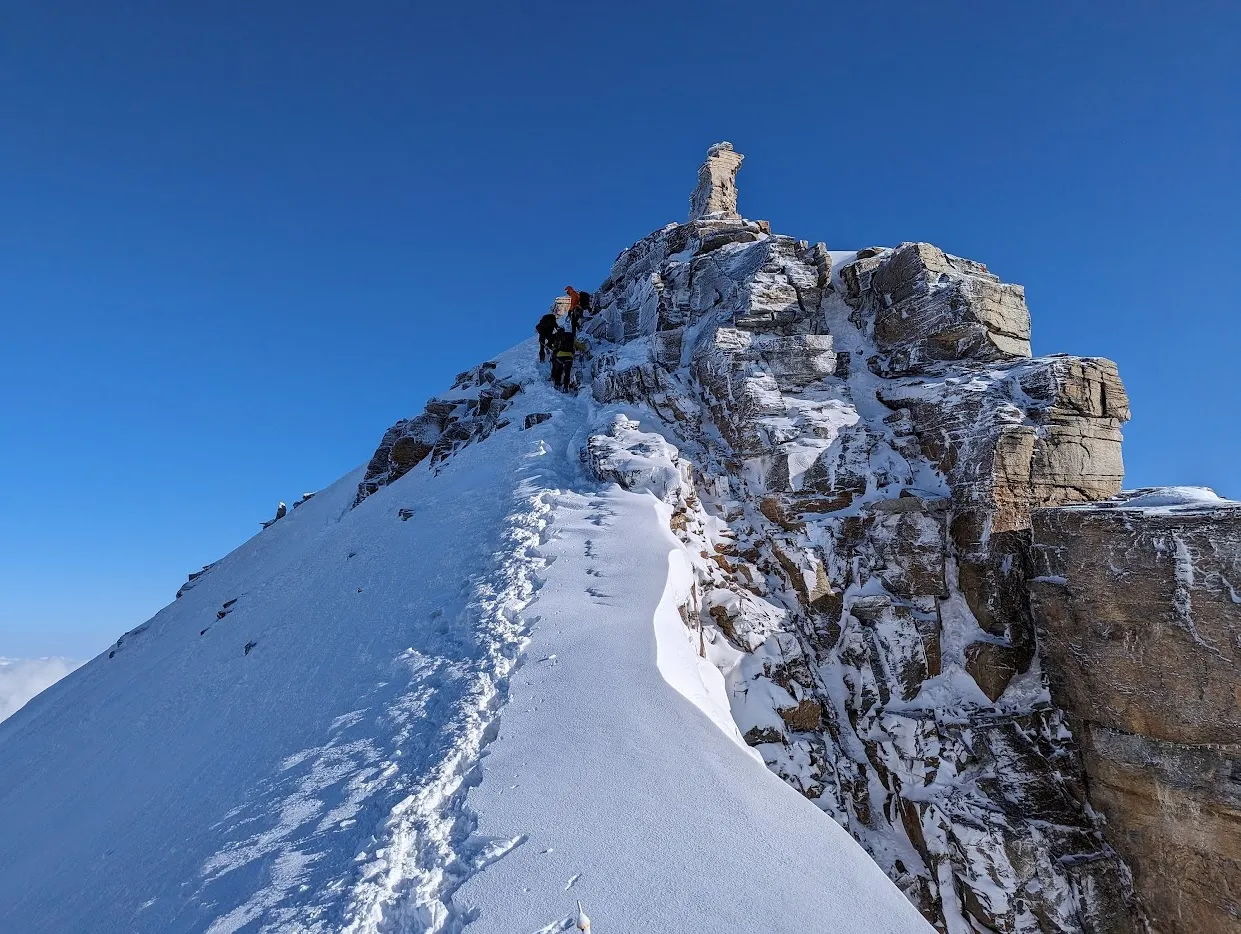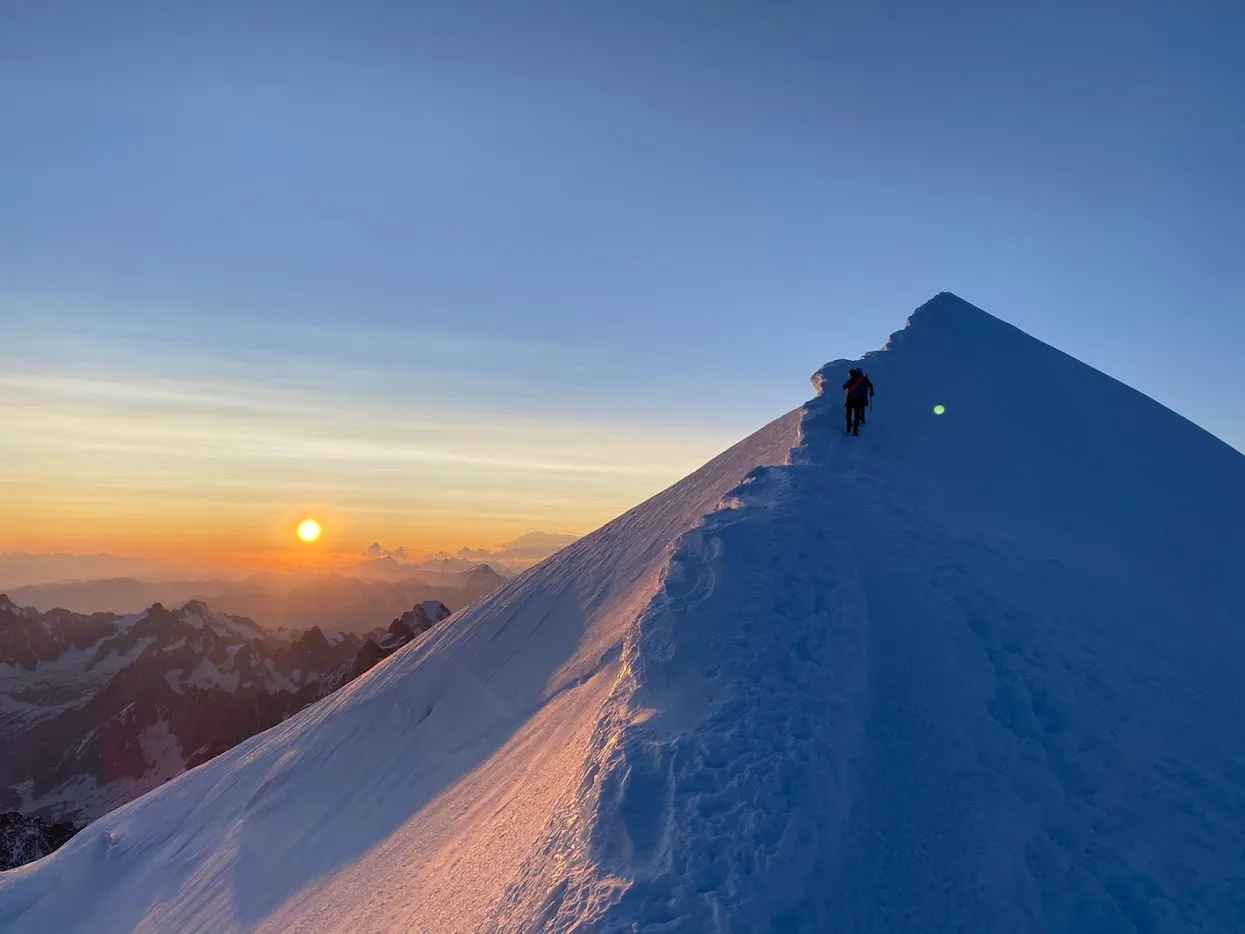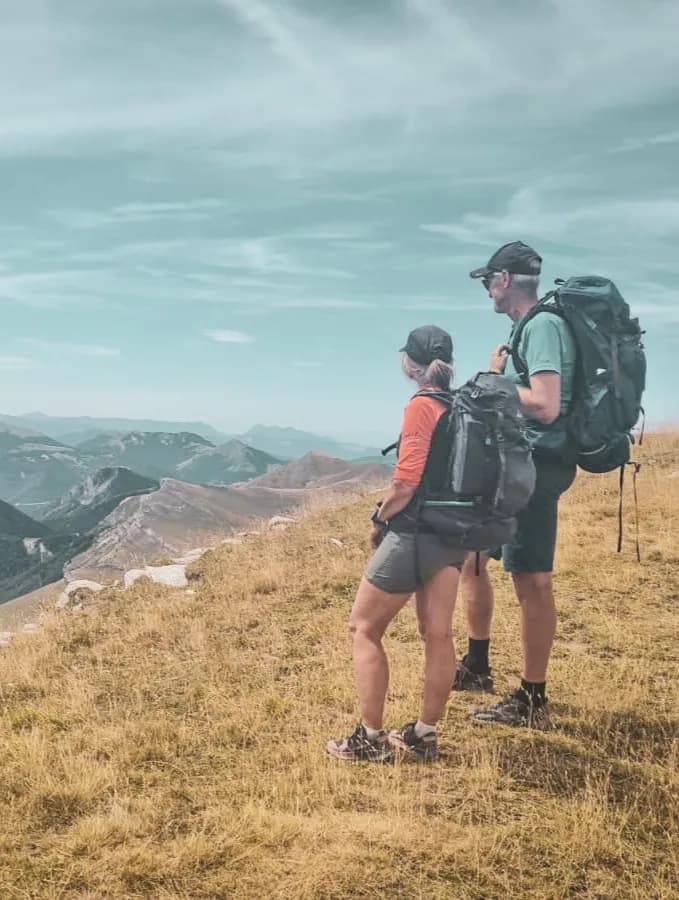The ultimate guide to Mont Blanc climbing
Discover everything about the Mont Blanc mountain. Learn how to prepare yourself for Mont Blanc climbing with this ultimate guide.

The Mont Blanc summit is one of Europe’s most iconic peaks. At an impressive 4,808 meters, it is the highest point in the Alps and a dream destination for mountaineers. Many climbers see Mont Blanc climbing as the ultimate challenge thanks to its unique landscapes and constant changes between green valleys, vast glaciers and steep rock faces. For centuries, the mountain has attracted adventurers, nature lovers and anyone looking to push their limits.
What makes the Mont Blanc summit so special is the incredible variety of landscapes. Here you will find serene snowfields, rugged alpine ridges and sweeping views over France, Italy and Switzerland. Every step offers a new perspective both on the mountain itself and on your own endurance.
Popular routes like the Goûter Route or the Trois Monts Route each bring their own challenges, from technical sections to breathtaking panoramas. Climbers who are well prepared face not only the physical effort of Mont Blanc climbing but also the deep awareness that they are part of a mountaineering tradition that respects the power of nature. Wildhartt organizes guided ascents where both safety and the beauty of this extraordinary mountain are always in focus.
Who should consider climbing the Mont Blanc summit
Mont Blanc climbing is not just for elite alpinists, but it does require serious preparation. Strength, endurance and adaptability to altitude are crucial. Beginners with strong fitness can attempt the climb, provided they gain experience with high-altitude trekking and snow travel. Safety comes first, so alpine courses or glacier treks are highly recommended. Many climbers use Gran Paradiso as a first 4000-meter peak before aiming for the Mont Blanc summit.

Basic requirements include:
- Good physical health and endurance
- Ability to hike for at least eight hours per day
- Experience with mountain trekking and ideally basic ice techniques
- Mental resilience for changing weather and challenging situations
Expeditions with experienced guides, like those offered by Wildhartt, provide support tailored to different levels, ensuring a safe and rewarding Mont Blanc climbing experience.
Preparing for Mont Blanc climbing: physical and mental readiness
A successful Mont Blanc climb begins months in advance. Physically, you need strong endurance for long days of hiking at altitude, carrying a pack and moving on snow and ice. Training for strength, balance and stability is essential.
Mental preparation is equally important. Long days, exposure to risk and rapidly changing weather can cause stress. Staying calm and focused helps you respond wisely to challenges. Guided climbs with Wildhartt prepare you for alpine conditions and build your confidence before summit day.
Best time for Mont Blanc climbing
The main season for Mont Blanc climbing runs from June to September. During these months, temperatures are milder, daylight is longer and mountain huts are open. July and August are most popular due to relatively stable weather and accessible routes.
Still, conditions can change within minutes. Even in summer, snowstorms and strong winds are possible. Always check reliable forecasts like Météo France and be ready to adjust your plans.
Essential gear for a Mont Blanc summit attempt
The right equipment is crucial for both safety and comfort. Important items include:
- High-cut mountaineering boots with crampon compatibility
- Layered clothing: breathable base layer, insulating layer, waterproof outer shell
- Warm hat, gloves, neck gaiter
- Sunglasses with UV protection and sunscreen
- Climbing helmet, harness, crampons, ice axe
- Headlamp with spare batteries
- Backpack (30–40 liters), water supply, high-energy snacks
Wildhartt guides perform gear checks before departure to ensure everything is in order.
Choosing the right route to the Mont Blanc summit
Different routes lead to the Mont Blanc summit, each with its own character:
- Goûter route – The classic route, physically demanding but less technical, with some rockfall risk at the Grand Couloir.
- Trois Monts route – More technical and scenic, involving glacier travel and requiring solid ice skills and good weather.
- Gonella (Italian) route – Quieter and wilder, but longer and more demanding.
Choosing the right route depends on your skills, fitness and goals. A certified guide increases both safety and the chances of a successful summit.

Safety, sustainability and respect for the Mont Blanc
Mont Blanc climbing requires respect for the environment and fellow climbers. Always follow marked trails, avoid disturbing wildlife and carry out all waste. Use eco-friendly products and reduce single-use plastics.
Wildhartt promotes sustainable climbing practices with local experts to help preserve the Mont Blanc summit for future generations.
Common mistakes in Mont Blanc climbing and how to avoid them
Frequent mistakes include:
- Inadequate acclimatization
- Ignoring weather forecasts
- Poor gear preparation
- Underestimating the physical and mental demands
- Booking huts too late in peak season
Wildhartt expeditions address these issues during preparation to help you avoid them.

Your Mont Blanc climbing experience with Wildhartt
Climbing the Mont Blanc summit with Wildhartt means small groups, certified guides and attention to safety and comfort. All logistics, from gear checks to hut bookings, are handled so you can focus on the climb itself. With professional guidance and personal attention, you will enjoy a memorable and successful Mont Blanc climbing experience.
These adventures might interest you ...

Stevenson’s trail: hike with a Donkey through the Cévennes

Hut-to-hut trekking around Monte Viso

Hiking in Mullerthal: Luxembourg's little Switzerland

Hike the Ecrins with a Donkey by your Side

The king's trail: hiking through Swedish Lapland
